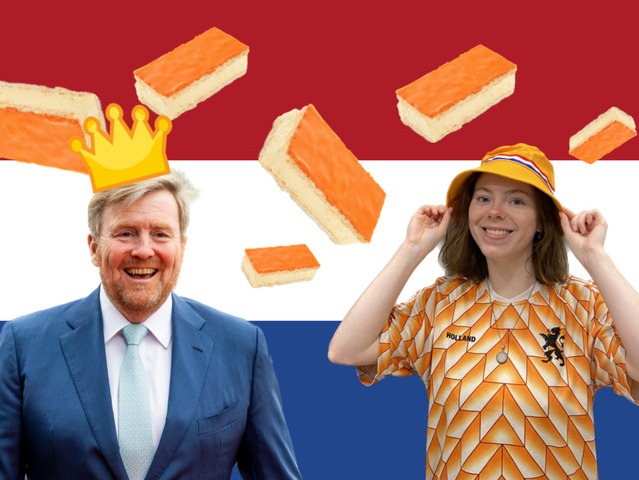King’s Day: everything you need to know about the history behind it

King’s Day is almost here: time to get your orange clothes out of your closet! You probably already know a lot about all the customs and traditions surrounding the day, but do you know the history behind it? Let’s travel 138 years back in time…
How it all started…
Back in 1885, King’s Day was called Princess’s Day and was celebrated because of Princess Wilhelmina’s fifth birthday. It was an initiative started by the Liberals, who wanted to emphasise national unity within the country. However, it was not really a new occurrence as people already celebrated the birthday of Kings Willem I, Willem II and Wilhelmina’s father Willem III respectively with church services and parades, but only in big cities.
After the death of King Willem III on the 23th of November in 1890, Wilhelmina became Queen. She was only 10 years old at that time, so her mother Queen Emma acted as regent. The first real Queen’s Day was celebrated in August 1891, but Queen Wilhelmina was not present. One year later, Queen’s Day became a proper national feast as the public not only celebrated Wilhelmina’s birthday, but also that she had recovered from a serious illness.
Then, it became a tradition
Queen Juliana succeeded her mother in September 1948. Just like Wilhelmina, she celebrated Queen’s Day on her own birthday: 30th of April. On the steps of Palace Soestdijk, Juliana and her family accepted flowers and other gifts from people from all over the Netherlands. From the 1950s onwards, people could watch the happening on television. It also became an official holiday during that time.
When Queen Beatrix became Queen, she decided that Queen’s Day would still be celebrated on the 30th of April–rather than on her birthday on the 31st of January–out of respect for her mother. But she did make a change in tradition: instead of letting the people come to her, she decided to visit them. Together with other members of the Royal Family she would visit one or two municipalities during that day. There, they did all kinds of outdoor activities (such as koekhappen [trying to bite a piece of cake hanging from a string while blindfolded]) and watching performances, which are still part of the day today.
How it’s celebrated now
After the accession of King Willem-Alexander to the throne, Queen’s Day became King’s Day and the date changed to the 27th of April, which is the actual birthday of the King. As Willem-Alexander is a sports lover, he invented the Koningsspelen [King’s Games] which typically takes place in the week before King’s Day. On those two days, children in primary schools do all kinds of sports activities.
King Willem-Alexander is also the reason why we eat orange tompouces on King’s Day. When he was born in 1967, the Royal Family celebrated his arrival not only with the typical blauwe muisjes [something to put on bread and is made from anise seeds], but also with an orange tompouce. Impress your friends with this fun bit of history the next time you’re eating this special delicacy!
Want to know what you can do to celebrate King’s Day in Groningen? Students Asmo and Maimoena give some tips on activities you can do, and foods you can try. You can also find a reel on how to prepare for the day on our socials. Definitely check it out!
So, now you know the history behind King’s Day! It certainly has a lot to do with the Royal Family as the name suggests. Do you have any plans? Let us know in the comments below. Have a nice day! :)
About the author

Hiya! :) I’m Hylke, a Dutch MA English Literature student. People often ask me if I’m Frisian, but sadly I’m not; I just have a Frisian name. I love reading, writing, meeting with friends, and the colour yellow, so much so that I take pictures of every yellow wall I can find!

